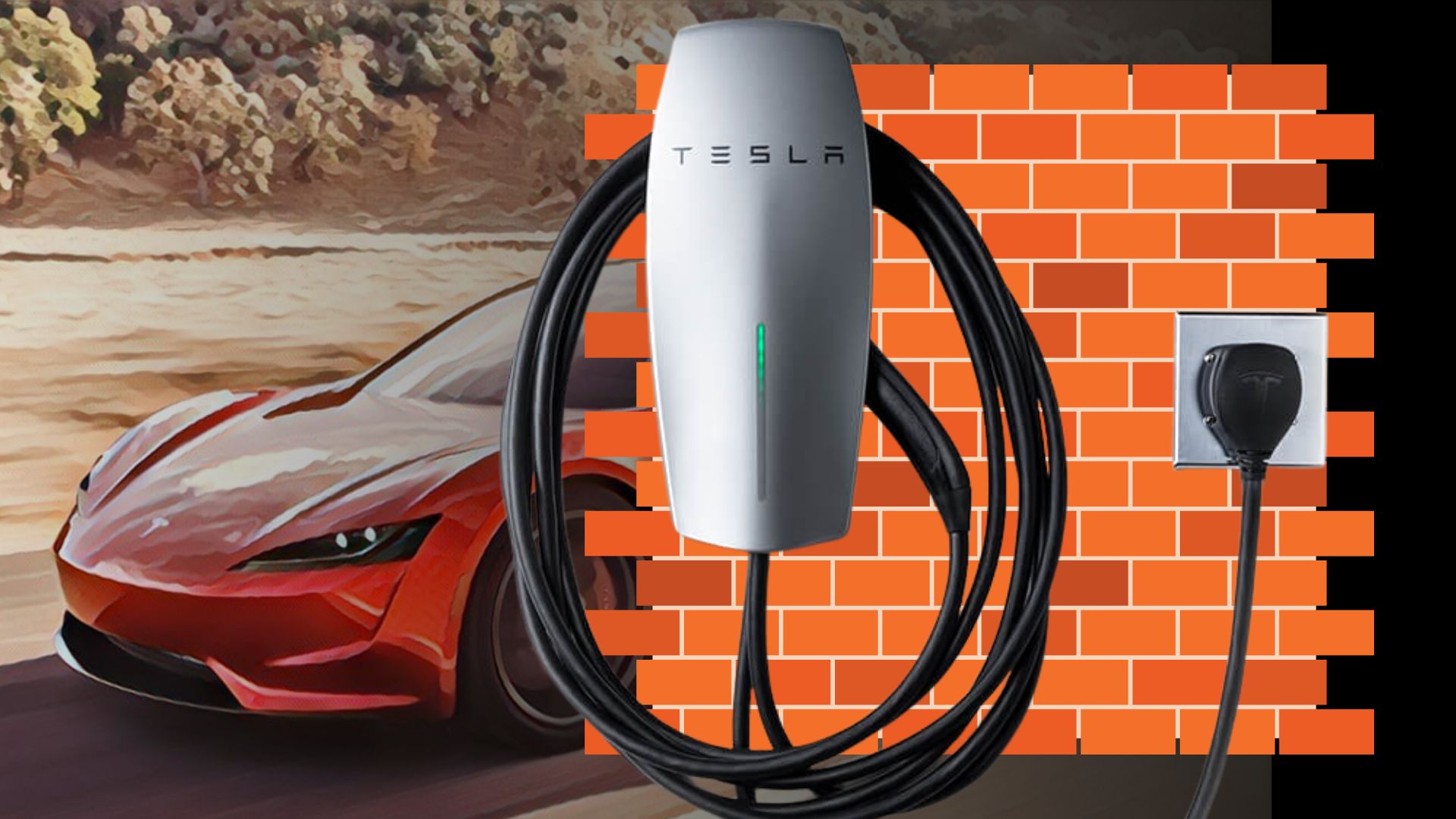Ultimate guide to efficiently install and maintain your Tesla Wall Charger for reliable, everyday charging of your Tesla.
In the dynamic field of electric vehicle technology, efficient charging solutions are paramount. The Tesla Wall Charger stands out as a reliable option, especially as we enter 2024. This guide is centered around the Tesla Wall Charger installation, particularly for the latest model, and provides a detailed How to install Tesla Wall Charger manual.
You might also like:
- Tesla’s Investor Day 2023 Summary: The Latest Strategies Unveiled.
- Tesla Stock to $6 Trillion Market Cap: What You Need to Know About Cathie Wood’s Tesla Stock Prediction.
The Tesla Wall Charger is designed for Tesla vehicle owners, offering faster charging times than standard outlets. This feature is essential for daily commuters and long-distance travelers, as it facilitates at-home charging and reduces reliance on public stations. The 2024 model of the Tesla Wall Charger brings new features, enhancing user experience and compatibility with newer Tesla models. These include improved charging efficiency and advanced connectivity with home energy systems.
For Tesla owners, understanding the installation process of the Wall Charger is crucial. This guide aims to simplify the Tesla Wall Charger installation, providing clear instructions for a successful setup. We focus on the practical steps and safety considerations, ensuring that even those with minimal electrical experience can confidently approach the installation.
As we explore the installation steps, the guide will balance technical details with user-friendly directions, ensuring a comprehensive understanding of theHow to install Tesla Wall Charger process, tailored for the 2024 model.
Pre-Installation Checklist
Necessary Tools and Materials
Before embarking on the Tesla Wall Charger installation, it’s essential to gather the appropriate tools and materials. The installation process requires a set of standard electrical tools, including a wire stripper, screwdrivers (both flathead and Phillips), and an adjustable wrench. Additionally, you’ll need electrical supplies like wire nuts, conduit, and appropriate gauge electrical wire, compatible with the Tesla Wall Charger specifications.
For mounting the charger to the wall, ensure you have wall anchors, a drill, and drill bits suitable for your wall type (e.g., concrete, drywall). Safety equipment such as gloves and eye protection should also be on hand.
Safety Precautions and Initial Setup Requirements
Safety is paramount when performing the How to install Tesla Wall Charger process. Begin by turning off the power at the circuit breaker to avoid any electrical hazards. It’s advisable to use a voltage tester to confirm that the power is indeed off in the area where you’ll be working.
Review the Tesla Wall Charger manual thoroughly for any model-specific instructions or warnings. The installation area should be dry, well-lit, and free of any obstructions. Ensure the wall where you plan to mount the charger is structurally sound and can support the weight of the charger.
For the initial setup, verify that the electrical capacity of your home can accommodate the additional load of the charger. This might involve consulting with a professional electrician to ensure that your home’s electrical system is up to code and capable of handling the Tesla Wall Charger.
In summary, the preparation phase of the Tesla Wall Charger installation is crucial for a safe and successful installation. Gathering the right tools and materials, adhering to safety protocols, and ensuring the readiness of your installation site are key steps in this process.
Installation Process
Unboxing and Preparation
The first step in How to install Tesla Wall Charger begins with carefully unboxing your Tesla Wall Charger. Inside the box, you will find the charger unit, a mounting bracket, installation hardware, and the user manual. It’s crucial to inspect all components for any signs of damage that may have occurred during shipping. Familiarize yourself with the parts and the layout of the charger, as detailed in the manual.
Mounting the Charger on the Wall
After preparing the area as per the pre-installation checklist, the next step is to mount the charger on the wall. Position the mounting bracket against the wall at the desired height, ensuring it’s level. Mark the drill points through the holes in the bracket. Drill holes at these marked points and insert the wall anchors provided.
Align the mounting bracket over these anchors and secure it with the provided screws. Once the bracket is firmly in place, attach the Tesla Wall Charger to the bracket as per the instructions in the manual. Ensure that the charger is securely fastened to avoid any movement or vibration during use.
Connecting to the Electrical Supply
This phase of the Tesla Wall Charger installation requires attention to detail and adherence to safety standards. Remove the charger’s faceplate to access the wire terminals. Run the conduit from your electrical panel to the charger and thread the electrical wires through. Connect these wires to the appropriate terminals on the charger, matching the wire colors to the terminal labels. Once connected, replace the faceplate.
It’s essential to ensure that all connections are tight and secure. This step might require professional assistance, especially if you’re not experienced with electrical installations.
Setting Up Software or Connectivity Features
After the physical installation, configure any software or connectivity features that your Tesla Wall Charger offers. This can include connecting the charger to your home Wi-Fi network, setting up charging schedules, and integrating it with your Tesla account for monitoring and control through the Tesla app.
Complete the installation by restoring power at the circuit breaker and testing the charger with your vehicle. Ensure the charger communicates correctly with your car and that the charging process starts without any issues.
Post-Installation
Testing the Charger
Once the Tesla Wall Charger installation is complete, testing the charger is a critical step. Begin by connecting your Tesla vehicle to the charger using the charging cable. Power on the charger and observe the indicator lights on the Tesla Wall Charger. These lights provide immediate feedback on the status of the charger and the ongoing charging process. Consult the user manual to understand the specific light patterns and what they signify.
Next, monitor the charging process on your Tesla’s dashboard. It should display the charging status, including the rate of charge and estimated time to full charge. Ensure that the charger is delivering power consistently and that the connection between the car and the charger is stable.
Maintenance and Troubleshooting
Maintaining your Tesla Wall Charger is key to ensuring its longevity and optimal performance. Regularly inspect the charger for any physical damage or wear. Keep the area around the charger clear of debris and ensure that the charging cable is properly stored when not in use.
If you encounter any issues, refer to the troubleshooting section in the user manual. Common issues may include the charger not delivering power, irregular charging speeds, or error messages on the Tesla vehicle’s display. For more complex issues, contacting Tesla support or a qualified electrician is recommended.
Keep the firmware of the Tesla Wall Charger updated. Tesla frequently releases updates to improve functionality and add new features. These updates can typically be done through the Tesla app, ensuring your charger remains up-to-date with the latest software enhancements.
After completing the How to install Tesla Wall Charger process, regular testing, maintenance, and staying vigilant about updates and troubleshooting are essential practices. By following these guidelines, you can ensure that your Tesla Wall Charger operates safely and efficiently, providing reliable charging for your Tesla vehicle.
Conclusion
The Tesla Wall Charger installation process is a pivotal step in enhancing the electric vehicle experience for Tesla owners. By following the detailed guidelines for installation, testing, and maintenance, users can ensure efficient and reliable charging, fully leveraging the benefits of the Tesla Wall Charger for their daily needs.







